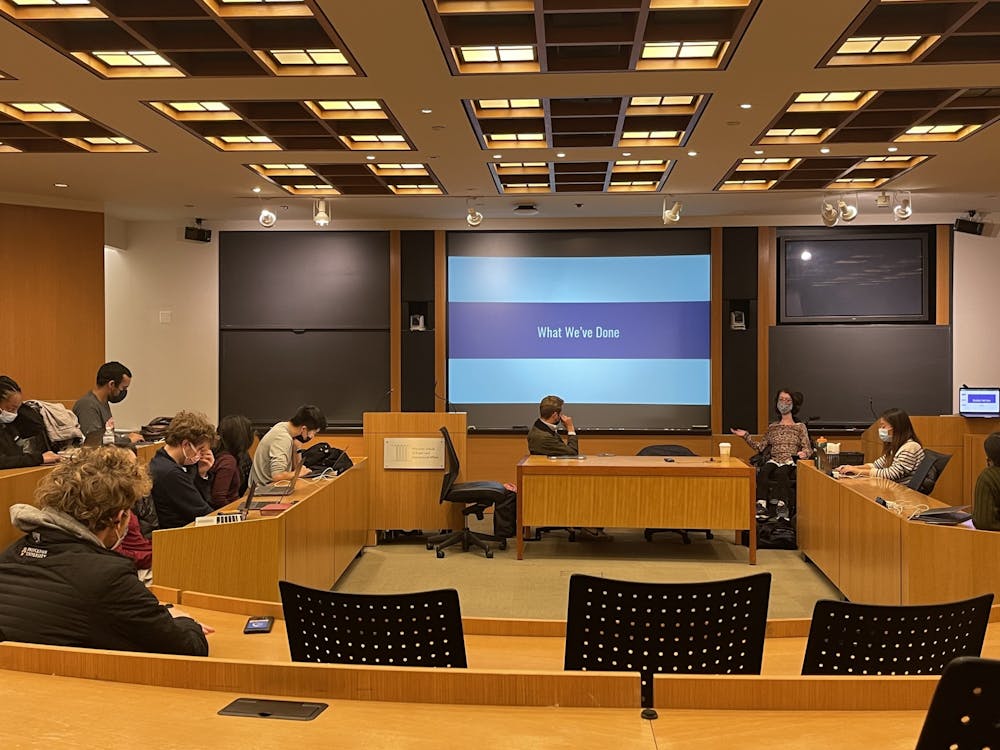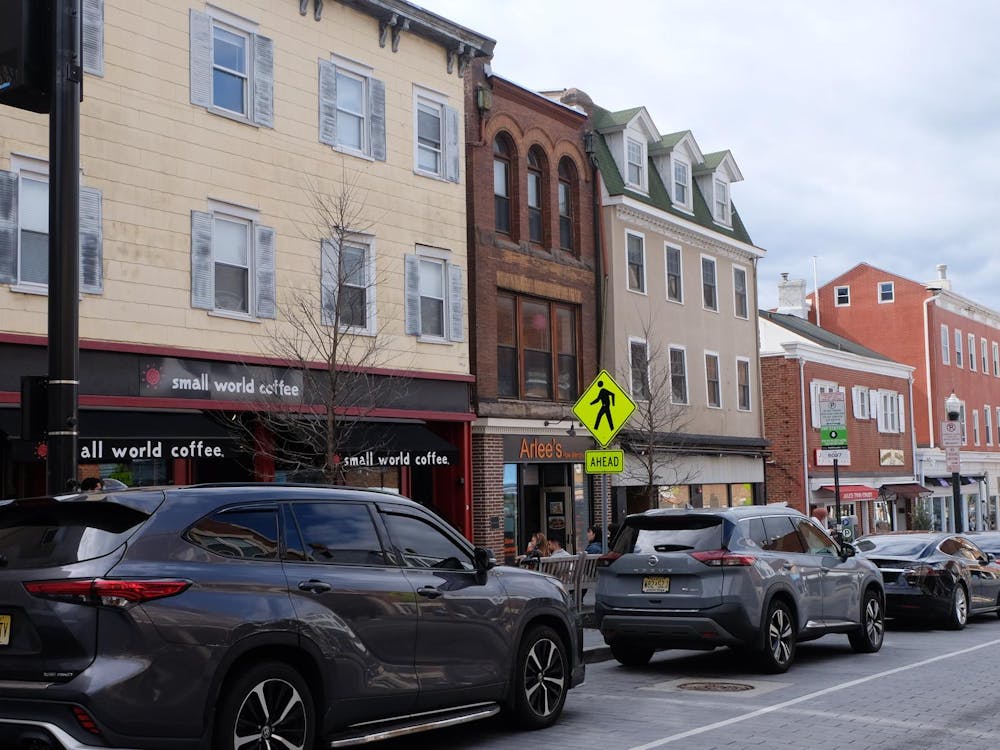At the Undergraduate Student Government Senate meeting on Sunday, Nov. 14, two University representatives presented on the University’s inaugural Diversity, Equity & Inclusion Report.
During their presentation, Vice Provost for Institutional Equity and Diversity Michele Minter and Associate Provost for Diversity and Inclusion Shawn Maxam explained the reasoning behind creating the report, as well as some of its findings.
According to Minter and Maxam, there have been four reports regarding DEI since the appointment of President Christopher Eisgruber ’83 in 2013. This report is the first of an annual installment on the University’s efforts towards improving DEI.
Minter outlined three main reasons that the University initiated the publication of the report.
“We want to gather the most talented people possible on campus,” she said. “Secondly, we are in the knowledge-generating business so we need great problem solving [and] idea generation, which comes from being exposed to different forms of people.”
“The University is in the business of training [future] leaders,” Minter added. “There is value in understanding your audience well, and understanding others’ identities well.”
Minter then referenced the murder of George Floyd in the summer of 2020 as a catalyst for significant equity-related changes on campus, stating that the University solicited feedback, held focus groups and town halls, and read many “demand letters” penned by University community members.
“We wanted to double down on our commitment to being an anti-racist institution,” she said.

Major themes of the report’s findings, according to Minter, include emphasizing continued systemic progress, holding relevant players accountable to carry out changes, and increasing transparency of the data that is collected every year.
Looking forward, Minter said that the goal for the report is to promote investments in infrastructural changes. The University will host external evaluations every four years to measure progress.
When the floor was opened for questions, U-Councilor Isabella Shutt ’24 referenced an earlier statement by Maxam that race and gender reportings were categorized following federal standards.
“If [respondents’ identities are] self-reported, why are we using federal guidelines when we know that … the federal government doesn’t do a great job of identifying people how they identify themselves?” she asked.

Shutt is a former news contributor for the Daily Princetonian.
Maxam referenced obligations to federal reporting, but acknowledged that the process of collecting this information “reveals gaps in [demographic data] reporting.”
Representatives from Evidn, a behavioral science consulting firm, and the Office of Sustainability gave a presentation on their joint project regarding energy conservation on campus.
The Princeton Energy Conservation Project intends to identify the most effective ways to reduce energy consumption by all members of the University community.
Evidn co-founder and visiting scholar at the University of Virginia John Pickering mentioned the University’s plan to transition to net-zero carbon emissions by 2046 and how Evidn plays a part in that plan.
According to Pickering, about 70 percent of the effort that will achieve this goal comes from the University’s installation of a geo-exchange energy program, along with other renewable energy programs.
The remaining 30 percent will come from behavioral changes, he said.
“We’ve got to be able to systemize change,” Pickering said, referencing a goal set by the University to be an “enduring model of change.”
In its second of three phases, the project has already begun working with over 100 different individuals and organizations on campus that have significant stakes in the process of reducing energy usage.
Within its project, Evidn has discovered that science laboratories, specifically in the chemistry department, contribute the most to wasteful energy production. All chemistry labs contain fume hoods, which protect lab spaces and users from dangers related to chemical spills.
There are 738 fume hoods on campus, according to Pickering.
“One fume hood is equal to one large residential home in terms of energy usage,” he said.
One of the projects that Evidn has initiated to counter this energy consumption is the development of a program that shows laboratory energy usage in real time. Pickering mentioned that the program is being developed in collaboration with students in the course COS 333: Advanced Programming Techniques. Pilot testing for the program is set to begin within the next month, he said.
Pickering also pointed out that habitual changes in residential settings, such as turning off lights in dorm rooms, do not significantly reduce energy consumption. Still, he emphasized the importance of including students in environmental changes.
“We want to create a project that is by the students, for the students,” he said.
Also at the meeting, Disability Task Force chair Naomi Hess ’22 reintroduced the task force to the Senate for this semester, presenting on past programming and initiatives as well as future plans.
Hess is an Associate News Editor for the ‘Prince.’
USG Senate meetings are held in Robertson Hall Room 016 at 8 p.m. on Sunday evenings and are open to all.
Andrew Somerville is a staff writer who corresponds with and covers USG happenings and other campus news. He can be reached at jas19@princeton.edu.








